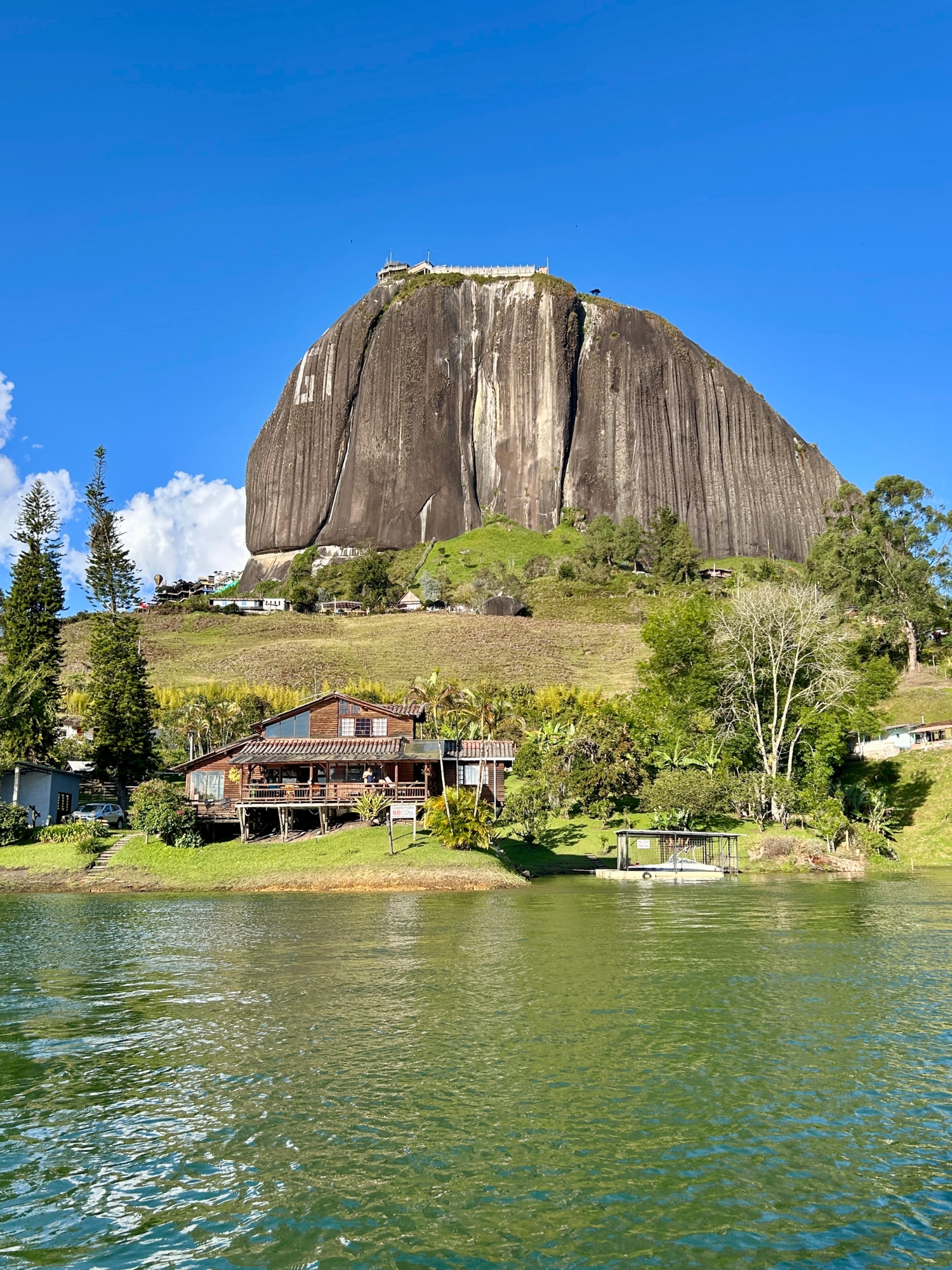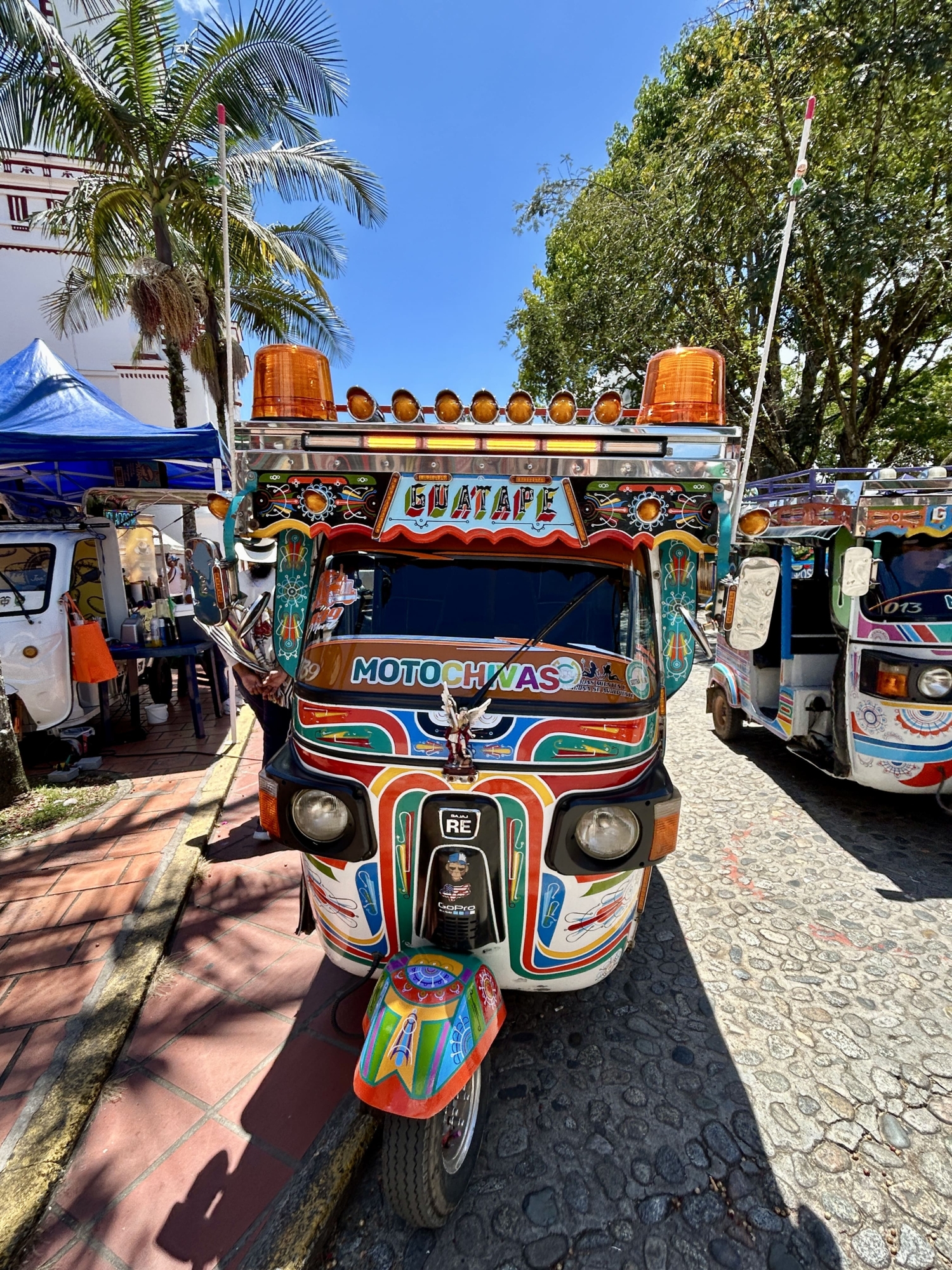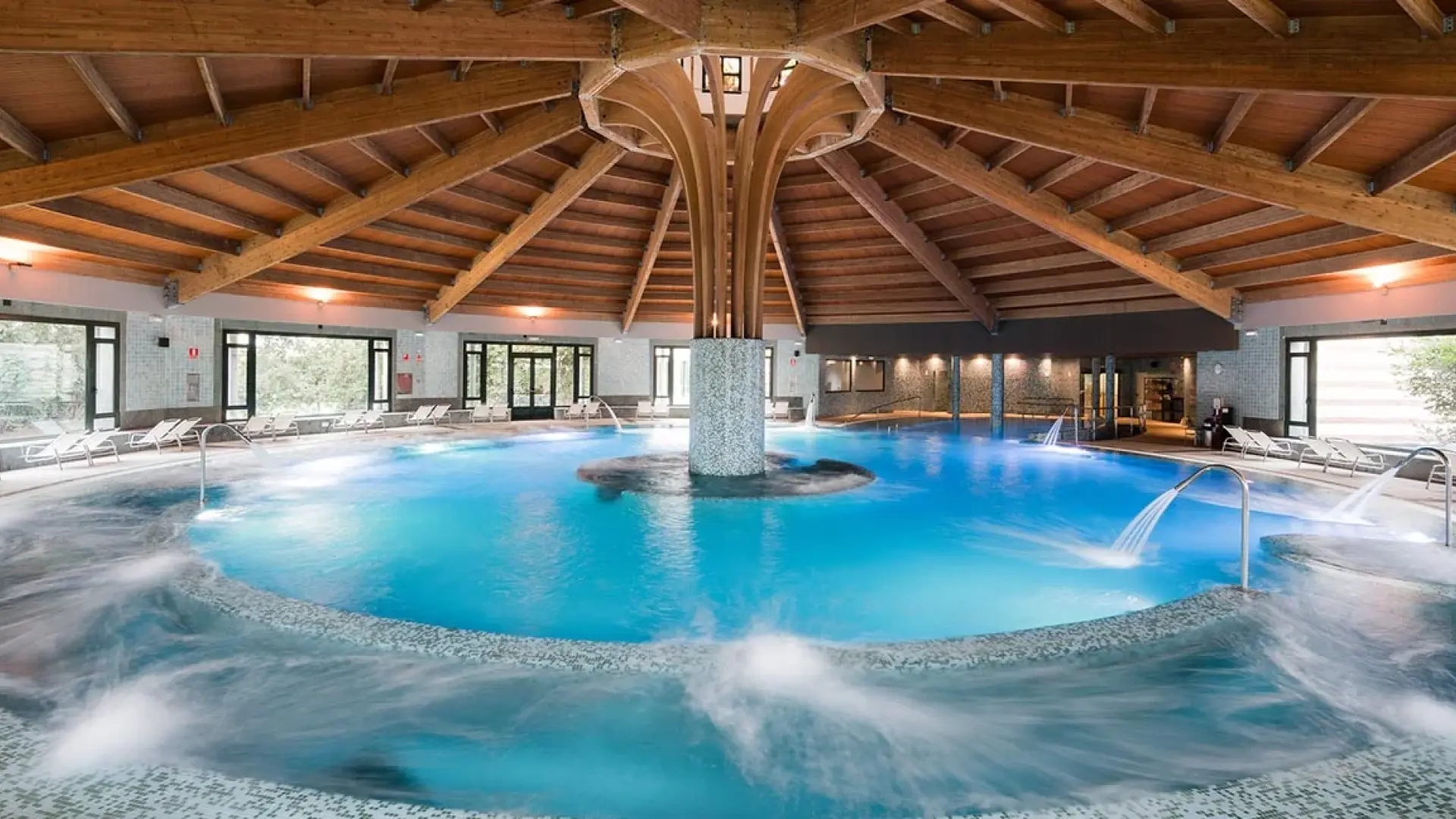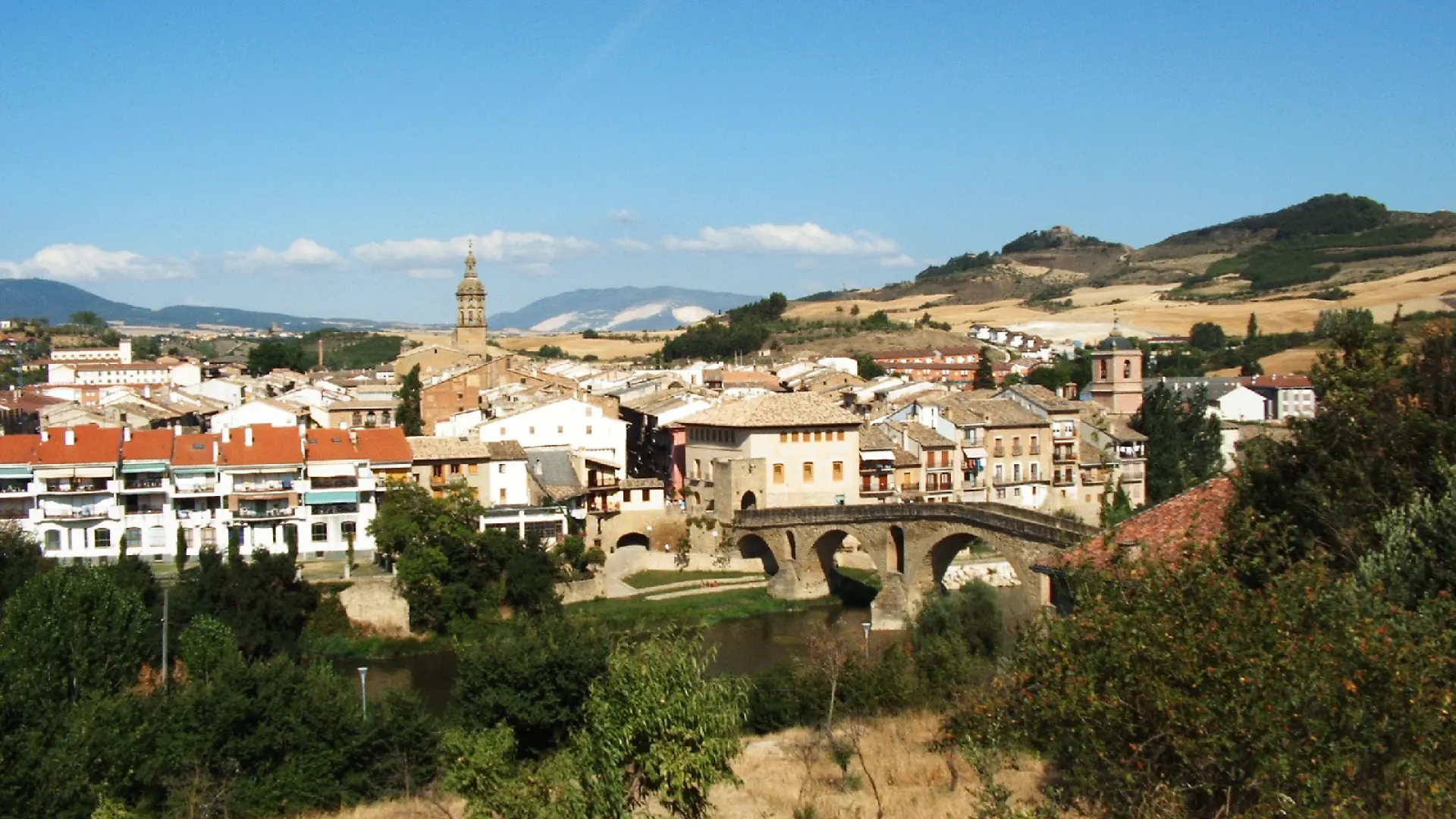Guatapé, the destination where magic, color and nature come together to make eastern Antioquia shine.

Astrid Saldarriaga doesn't hide her emotion and pride in her heritage. She's from Guatapé, a town of 78 square kilometers and 9,000 inhabitants, nestled in eastern Antioquia. And today she's our guide, leading us through the streets, the town's facades, and hidden corners, as well as the enormous Piedra del Peñol, with its amusing and even outlandish stories.
Astrid is a journalist and values her work as a tour guide, as it's precisely there that she carries out important work in sharing the stories that have shaped her region. We begin at the Cathedral of Our Lady of Mount Carmel, across from the main square, where she shows us photos of what her town was like 47 years ago and tells us about the most important milestones in the development and changes that took place in this region.
Guatapé, located just 79 kilometers from Medellín, “was an agricultural, livestock, and mining town, which radically changed its course in 1970, when Empresas Públicas de Medellín built a huge reservoir here to supply energy to a part of the country,” says Astrid. “To carry out this project, more than 2,200 hectares were flooded, which produced enormous transformations for the area and its inhabitants, since it was necessary to relocate two towns (which were submerged) and many people had to be relocated.”
The guide lays out the economic, political, environmental, and social effects for each person to judge. “It changed the way we see the world, it changed the way we eat, it changed the way we relate to each other… Imagine you’re a farmer and suddenly you’re in the middle of a hydroelectric plant, everything changes!” it says.
The truth is, the ecosystem is different now, and with it, the lives of its inhabitants and the economy. Many describe the reservoir as a sea in the middle of the mountains, and its residents have learned to make the most of it. Today, tourism is the leading sector of the town's economy, and with good reason: it has become one of the most prominent destinations in eastern Antioquia.
Town of baseboards, a color strategy “The baseboards are all the colorful decorations on the walls, roughly from the window down. Initially, they were made as protection against dampness and to keep animals from damaging them,” explains Astrid. “The baseboards (some flat, some raised) showcase the trades, traditions, beliefs, and religious practices of the people. Some feature nicknames, others the family's occupation. And with them, a new trade emerged here: the baseboard maker. All of this establishes Guatapé as the largest ethnographic museum in Colombia.”
We walked up Duque Street, “named in honor of Simona Duque, a heroine who gave her children to the cause of liberation and a leader of the nation,” our guide explained. Then we stopped at the “muleteer’s baseboard,” where she told us about the indigenous past and the Antioquian colonization, and continued on to the “Lamb of God” baseboard, a Catholic symbol seen on many walls throughout the town. She also told us about an important teacher, the baseboard honoring the silleteros (flower growers), and the religious symbols displayed on many of the houses.
We walk along the cobblestone streets up and down, with their houses with wooden balconies, we visit the Plazoleta de los Zócalos, the Calle de las Sombrillas, the Calle del Recuerdo and the Main Park.
The Rock of Guatapé Come on! It's time to climb the 702 steps to the top of El Peñón de Guatapé, also known as La Piedra del Peñol. It's a 220-meter-high monolith, located between the municipalities of Guatapé and El Peñol, that offers a great panoramic view of the reservoir.

Rock of El Peñol Photo: Fernando Barrera
The entrance fee is 30,000 pesos, and in 30 or 40 minutes, at a leisurely pace, you'll reach the top. Along the way, there are viewpoints and, at the end, a terrace (with craft shops and food and beverage vendors) offering panoramic views of the entire region: the verdant mountains to the east, the colorful houses along the reservoir's edge, and the water activities available there. There's also a helipad where helicopters depart, offering tours starting at 400,000 pesos per person, with six-minute flights circling the monolith and providing spectacular aerial views.
Fun fact: the stone has an owner. It belongs to the Villegas family, who acquired the property where it's located in 1953, and today they manage and maintain it for tourism.
The reservoir and its mountains A must-do plan is to navigate the reservoir by boat or pontoon to explore its canals and hidden corners and understand this mega-project that, in addition to being one of the country's main hydroelectric plants, has become an important destination.
The calm waters invite contemplation. The location of the old village is visible, marked by a cross that rises from the water precisely where its church once stood, serving as a historical symbol. And when the reservoir level drops, the ruins of the village become visible.
At 1,925 meters above sea level, this reservoir has become a mecca for tourism and water sports, and its islands, surroundings, houses, chalets and hotels complement the area's offerings.

Traditional transportation in Guatapé. Photo: Fernando Barrera
To complete this journey full of experiences, The Brown Autograph Collection hotel in Guatapé is the ideal choice. With a privileged location, offering panoramic views of the reservoir and surrounded by nature, it's perfect for those who want to explore the region.
All 116 rooms have balconies overlooking the reservoir, and some feature a jacuzzi. The hotel's architecture blends seamlessly with the surrounding natural landscape, and its earthy tones pay homage to wood and metal. The design highlights distinctly Colombian objects and materials, and the lush vegetation is a striking feature.
High-end gastronomy has options for all tastes: surf and turf, vegetables, Peruvian food, oriental cuisine and grilled dishes, with fresh local ingredients.
During your stay, you can experience things like an energy awakening on the reservoir's beach, a tour of Colombian fruits, design your own pizza at the Pismo restaurant, and take a pontoon boat ride on the reservoir.
The expansive terrace features a panoramic swimming pool and unique jacuzzis carved into enormous rocks, as well as a bar and restaurant. It also includes a gym, a Japanese restaurant, a botanical garden, a convention center, and meeting rooms.

The Brown hotel features a large terrace. Photo: Courtesy
The Brown, part of the Marriott chain, has positioned itself as an ideal wedding venue, offering elegant indoor facilities with versatile options for ceremonies, receptions, and banquets.
Don't forget to visit Cathedral of Our Lady of Mount Carmel: Built in the Greco-Roman style, this church features exterior plinths depicting the Fleur-de-lis and the four Evangelists. Its interior boasts a carved wooden altarpiece and Byzantine-style pieces.
The Zócalo Plaza. It was built to commemorate the bicentennial of the municipality's founding. It features colorful steps that showcase the traditional zócalo technique; it's a space to enjoy local cuisine, take photographs, and purchase handicrafts.
This tour was conducted at the invitation of: www.thebrown.com.co
eltiempo





